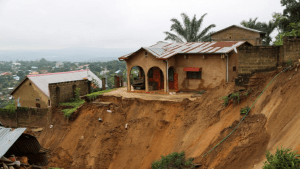Fiercer weather and worsening wildfires drove more than 20 million people from their homes over the last decade – a problem set to worsen unless leaders act swiftly to head off surging climate threats, anti-poverty charity Oxfam said on Monday.
Much of the displacement caused by cyclones, floods and fires appeared temporary and in some cases due to better efforts to evacuate people ahead of danger, Oxfam researchers said.
But its “sheer scale” was a surprise, said Tim Gore, Oxfam’s climate policy leader, with island nations like Cuba, Dominica and Tuvalu seeing on average close to 5% of their people out of their homes in any given year.
“This is the warming world we have long been warning about. Now we’re seeing it play out before our eyes,” he told the Thomson Reuters Foundation.
The Oxfam study, released as two weeks of UN climate negotiations start in Madrid, examined the numbers of people displaced inside their home countries by climate-fueled disasters between 2008 and 2018, based on government and international agency data, as well as media reports.
People were three times more likely to be displaced by cyclones, floods or fires than by conflicts, it found.
Some countries, like war-torn Somalia, were battered by both droughts and floods, sometimes in the same year.
That “confluence of disasters” leaves many poor nations -where most of the displacement is occurring – struggling to recover from one crisis before the next hits, Gore said.
Some have run aid appeals for both drought and flood relief simultaneously, he said.
“This is extraordinary,” he said. “This is climate chaos -what it actually looks like.”
Seven of the top 10 countries with the highest displacement by proportion of their population were developing island states, largely in the Pacific and the Caribbean, the report found.
But around 80% of all people forced from their homes by weather disasters over the last decade were in Asia, where large populations in countries from the Philippines to Sri Lanka live in areas threatened by cyclones or flooding, it said.
In May, Cyclone Fani alone led to the displacement of 3.5 million people in Bangladesh and India, most of them evacuated in advance of the storm in order to hold down casualties.
Overall, the number of weather disasters considered extreme grew five-fold over the last decade, researchers said.
The study did not look comprehensively at how many people were uprooted by “slow onset” disasters like droughts where it is harder to judge the beginning and end, Gore said.
Including drought-linked displacement would make the numbers”much higher”, he added.
It also did not estimate how much of the displacement became permanent – “a really unknown quantity”, Gore said.
In 2018, Oxfam made a rough estimate of the number displaced by extreme weather disasters during the year who were still out of their homes by the end of it, and came up with about 10-20%.






